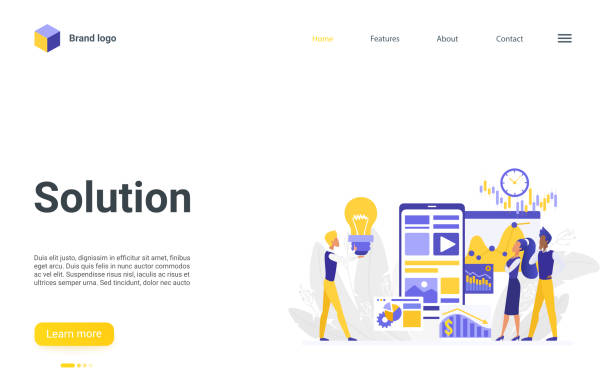The Importance of Personal Website Design in the Digital Age
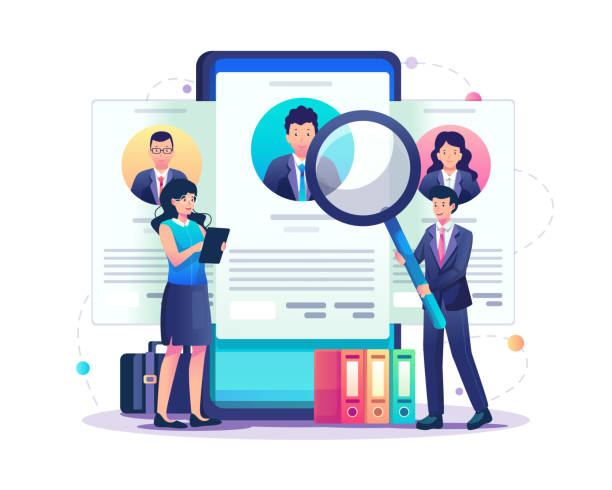
In today’s world, where physical boundaries have faded due to the expansion of the internet, an online presence has become a necessity for every individual, specialist, or entrepreneur.
Personal website design is no longer a luxury option, but rather a powerful tool for personal branding and showcasing abilities.
A personal website allows you to have complete control over narrating your own story, unlike social media platforms that have their own rules and limitations.
This dedicated space allows you to professionally and organizedly present your portfolio, articles, opinions, and even your biography to your target audience.
This is your online base, accessible twenty-four hours a day, seven days a week, continuously marketing for you.
The importance of this issue is such that many potential companies and employers look for your personal website before any collaboration, to gain a more comprehensive view of your skills and expertise.
Therefore, investing in personal website design is not only a smart move but also a vital step in your professional growth and individual business development.
This platform enables you to communicate directly with your audience and build a community of enthusiasts interested in your activities and expertise.
This approach is especially important for artists, writers, consultants, and freelancers looking to showcase their work and attract new clients.
Losing potential clients due to an unprofessional website? Rasaweb is your answer! With our specialized corporate website design services:
✅ Elevate your business’s credibility and standing
✅ Experience attracting more targeted clients
⚡ Act now to receive a free consultation!
What Are Your Goals for Personal Website Design?
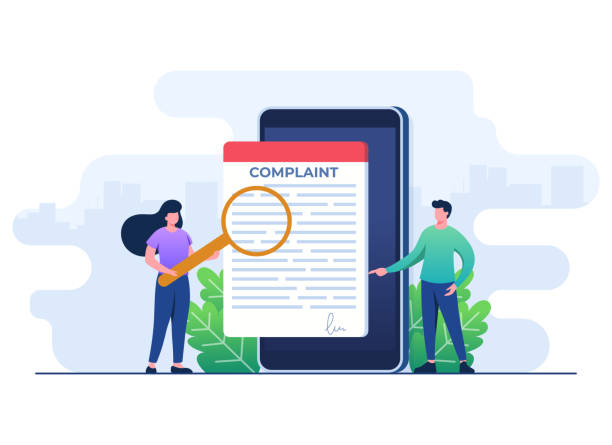
Before proceeding with the creation of any personal website, the first and crucial step is to define clear and specific goals.
Is your goal for personal website design to showcase your portfolio and attract new clients? Or perhaps you want to share your knowledge and expertise through educational articles and blog posts? Are you looking to create an online portfolio to attract job opportunities, or do you plan to launch a small store for your handmade products? The answer to these questions not only clarifies the design path but also directly influences the choice of platform, theme, and even the type of content you should include on your website.
For example, if your primary goal is to educate and share knowledge, focusing on the blog section and capabilities like article writing and commenting will be essential.
In contrast, if your website is meant to be a showcase for your artistic works, high-quality image and video galleries with attractive visual design will take priority.
Lack of clarity at this stage can lead to wasted time and money, and the final result may not be what you expected.
Therefore, take the time to carefully answer these questions:
* What do I want to present through my website?
* Who is my target audience?
* What reaction do I expect from visitors? (e.g., contact me, purchase a product, read articles)
* What problem will my website solve for my audience?
* How will I measure the success of my personal website design?
Answering these fundamental questions will help you develop a consistent content and design strategy for your website that is not only attractive but also serves your goals.
This is an important step for any individual website creation.
Key Steps in Personal Website Design and Development

Personal website design is more than just choosing a beautiful template; it’s a multi-stage process where each step requires careful attention and planning.
The first step after defining goals is choosing a suitable domain name (Domain Name).
The domain is your website’s name on the internet and should be short, memorable, and relevant to your name or brand.
After that, you need hosting (Hosting), a space on the internet that stores your website’s files and makes it accessible to visitors.
Choosing a reputable hosting provider with high speed and security is very important.
The next step is platform selection.
Content Management Systems (CMS) like WordPress, Wix, or Squarespace are popular options that allow you to create a personal website without the need for complex programming knowledge.
After choosing the platform, it’s time for visual design.
This includes selecting a theme (Theme), layout, colors, fonts, and images that should reflect your visual identity.
Content creation is also a vital part; it involves writing texts, uploading images and videos that should be engaging, informative, and relevant to your goals.
After designing and uploading content, Search Engine Optimization (SEO) is crucial for your website’s visibility.
This includes using keywords, optimizing images, and improving website loading speed.
Finally, the testing and launch phase takes place to ensure the correct functioning of all sections, proper display on different devices (mobile, tablet, desktop), and the absence of errors.
Remember that personal website development is an ongoing process and requires regular updates and maintenance after launch.
| Method | Advantages | Disadvantages | Suitable For |
|---|---|---|---|
| Using a Site Builder (CMS) | Fast, low-cost, no coding required, ready-made templates | Limited flexibility, less control over code, platform dependency | Beginners, limited budget, need for quick launch |
| Hiring a Freelancer/Web Designer | Custom design, professional, specialized optimization | High cost, time-consuming, need for research to find a good designer | More complex projects, need for unique design, larger budget |
| Coding from Scratch | Full flexibility, absolute control, optimal performance | Very time-consuming, requires high technical knowledge, very expensive | Web developers, very specific and large projects |
Choosing the Right Platform for Your Personal Website
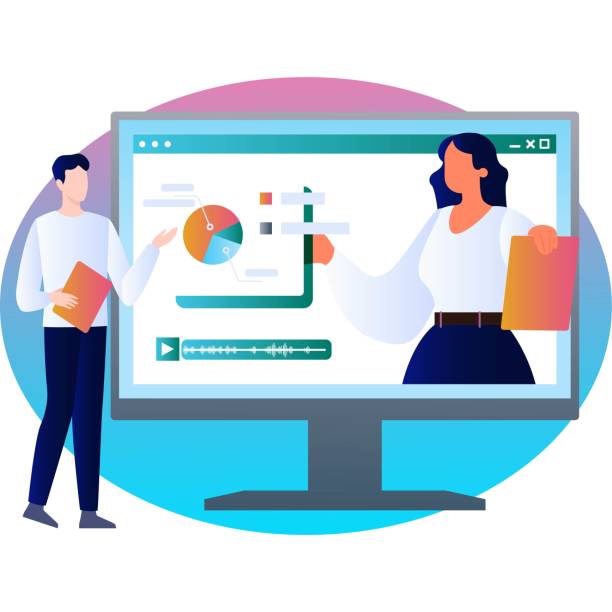
Choosing a platform is one of the most important decisions in your personal website design journey.
This choice will directly impact the ease of management, development capabilities, and even future costs of your website.
There are numerous options on the market, each with its own advantages and disadvantages.
WordPress, as the most popular Content Management System (CMS) in the world, powers about 40% of all websites.
WordPress offers very high flexibility and, with thousands of plugins and themes, is suitable for almost any type of website, from simple blogs to complex online stores.
This platform is ideal for those who want more control over their website and plan to expand it in the future.
In contrast, platforms like Wix and Squarespace are “Drag and Drop” options suitable for users without technical knowledge.
These platforms enable individual website creation with a very simple user interface and pre-designed templates.
However, their drawback usually lies in less flexibility and fixed monthly costs.
If you are looking for a quick and easy setup and do not require very specific and customized features, these options can be suitable.
For developers and individuals who need complete control and infinite customization, coding from scratch using languages like HTML, CSS, and JavaScript, along with frameworks like React or Vue.js, is the best solution.
This method offers the most freedom but requires deep technical knowledge and significantly more time.
Ultimately, choosing the right platform for your personal website design depends on your technical knowledge level, budget, time, and long-term goals.
Does your current website build the trust that potential customers should have in your business? If the answer is no, it’s time to get your professional and impactful corporate website with Rasaweb.
✅ Fully custom design tailored to your brand identity
✅ Significant increase in lead generation and business credibility in the eyes of customers⚡ Contact us now for a free consultation!
Content is King for Your Personal Website

Regardless of how beautiful and technically excellent your personal website design is, without engaging and valuable content, your website cannot have the necessary impact.
Content is the heart and soul of any website that attracts users and compels them to stay and interact.
In the context of a personal website, content includes everything you use to introduce yourself, your skills, experiences, and thoughts.
This can include a comprehensive biography, online resume, portfolio of previous projects, blog articles in your field of expertise, case studies, certifications and testimonials, and even introduction videos.
For your content to be effective, it must be original, relevant, and high-quality.
If your website is for attracting clients, the portfolio must be outstanding and showcase your best work.
If the goal of personal website development is to share knowledge, blog articles should be in-depth, informative, and up-to-date.
Always remember that your audience is looking for value.
Content that solves a problem, provides new information, or is entertaining can ensure your success.
In addition to quality, content formatting is also very important.
Using subheadings, bulleted lists, relevant images and videos, and short paragraphs significantly increases content readability.
Also, regular content updates not only keep your website alive but also help your SEO and ranking in search engines.
Up-to-date and fresh content indicates your activity and commitment to providing new information.
So, in the process of creating a personal website, prioritize content.
User Experience and User Interface Principles in Personal Website Design
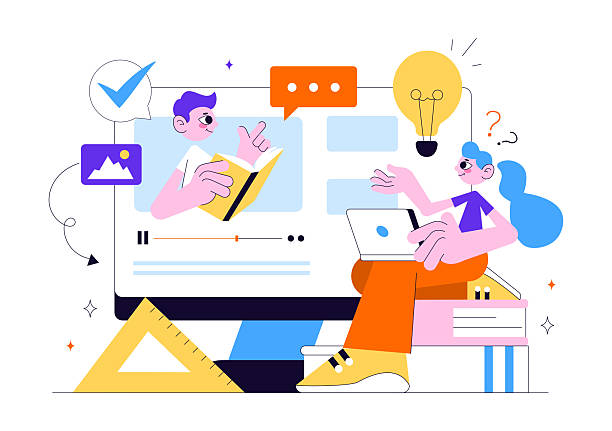
User Experience (UX) and User Interface (UI) are two key concepts in personal website design that play a vital role in its success and effectiveness.
UI refers to the look and feel of the website – how visual elements (colors, fonts, images, buttons) are arranged.
Whereas UX relates to the overall user experience when interacting with the website – is the website user-friendly, is its navigation easy, and can the user quickly find the information they need?
An excellent UI/UX design for your personal website means creating a positive and frictionless experience for visitors.
This includes:
* Easy and intuitive navigation: Menus should be clear, logical, and accessible so that users can easily move between different pages.
* Responsive Design: Your website should display correctly and maintain its functionality on all devices, from desktop computers to tablets and smartphones.
This is very important for personal website design.
* High loading speed: Today’s users are impatient, and a slow website can quickly drive them away.
Optimizing images and website code for high loading speed is essential.
* Content readability: Using appropriate fonts, sufficient font size, good color contrast between text and background, and proper paragraphing makes content pleasant for users to read.
* Clear Call to Action (CTA): Buttons or links that encourage users to perform a specific action (such as “Contact Me”, “Download Resume”, “View Portfolio”) should be prominent and clear.
Focusing on these principles will help you create an individual website that is not only beautiful but also enjoyable and efficient for users.
SEO Optimization for Personal Website Visibility

Having a personal website is only half the journey; the other half is ensuring its visibility to the target audience.
This is where Search Engine Optimization (SEO) comes in.
SEO is a set of techniques that help search engines like Google better understand your website and give it a higher ranking in search results.
For personal website design to be well-seen, you need to pay attention to several key aspects of SEO.
The first step is keyword research.
Identifying the words your target audience searches for to find your services or content is crucial.
Naturally incorporate these words into your titles, texts, and image descriptions.
Content optimization includes writing attractive meta descriptions and optimized title tags for each page that entice users to click.
Website loading speed is also an important SEO factor; slow websites receive lower rankings.
Using optimized images, compressing codes, and choosing a fast hosting can help improve speed.
Mobile-Friendliness is also very important, as a large portion of searches are done via mobile devices.
Ensure that your individual website displays well on smartphones.
Proper internal linking that connects related pages, and obtaining backlinks from other reputable websites, also significantly helps your website’s credibility and ranking.
By adhering to these principles, you can ensure that your personal website design is not only beautiful but also discoverable and noteworthy in the vast ocean of the internet.
This is an important step for any personal website creation project.
| SEO Element | Description | Importance for Personal Website |
|---|---|---|
| Keywords | Phrases users employ in their searches. | Helps potential employers or clients find you. |
| Quality Content | Articles, portfolios, detailed and engaging resumes. | Increases user dwell time and reduces bounce rate. |
| Loading Speed | The time it takes for the website to fully load. | Better user experience and higher ranking in search results. |
| Responsive Design | Correct display of the website on various devices (mobile, tablet). | High importance due to increased mobile searches. |
| Backlinks | Links from other websites to your website. | Increases your website’s credibility and domain authority. |
Personal Website Security and Maintenance Over Time
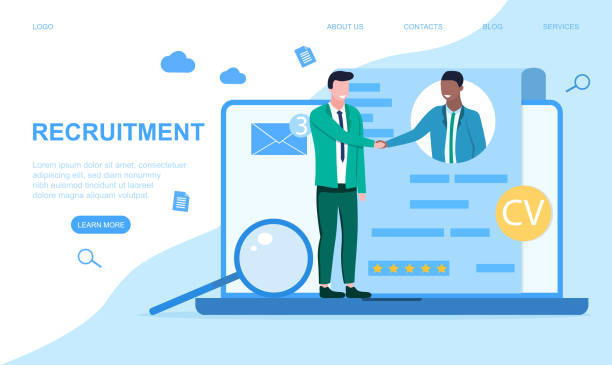
After the completion of your personal website design and its launch, your work is not finished.
Security and continuous maintenance of the website are two vital factors to ensure its proper functioning and protection against cyber threats.
Neglecting these aspects can lead to data loss, a decrease in SEO ranking, and even loss of your credibility.
In terms of security, the first step is installing an SSL certificate, which encrypts traffic between your website and users (the website address starts with “https://”).
This is not only essential for user security, but Google also prefers websites with SSL in its rankings.
Regularly updating the platform (like WordPress), plugins, and themes is another critical aspect of security, as many vulnerabilities stem from old and outdated versions.
Using strong passwords and unique ones for the website’s admin panel, and enabling two-factor authentication (2FA) if possible, adds further layers of security.
Additionally, installing a website firewall (WAF) and security tools that identify and block brute-force attacks and malware can be very beneficial.
Regarding maintenance, regular backup of the entire website (files and database) is of paramount importance.
These backups should be stored in a secure location separate from the main server so that you can quickly restore your website in case of an issue.
Regularly checking and fixing broken links, optimizing the database, and clearing the website cache to improve loading speed are also important maintenance tasks.
These continuous actions are essential for the long-term stability and success of your individual website and demonstrate your commitment to your personal website.
Does your current e-commerce website design lead to lost customers and sales?
Rasaweb is your solution with modern and user-friendly e-commerce website designs!
✅ Significant increase in conversion rates and sales
✅ Creation of strong branding and customer trust acquisition⚡ Get a free e-commerce website design consultation from Rasaweb!
Inspiring Examples of Successful Personal Website Design
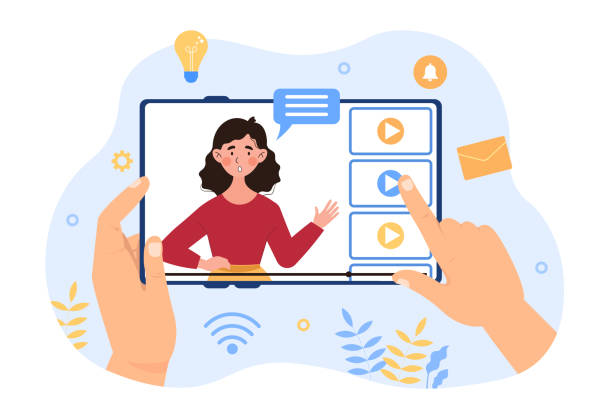
To better understand what makes a personal website design successful, examining inspiring examples can be very useful.
These websites are not only visually appealing but also effectively reflect their owner’s goals and provide an excellent user experience.
* A Graphic Designer/Artist’s Website: These websites usually focus on portfolio display.
Their design is highly visual, utilizing high-quality image galleries, attractive sliders, and space that allows artworks to breathe.
Their navigation is minimal, allowing the user quick access to the best works.
* A Writer/Journalist’s Website: This type of website emphasizes textual content.
Blogs, articles, and books take priority.
Their design is clean and uncluttered to maximize readability.
They might also include “News” or “Events” sections.
* A Consultant/Coach’s Website: These websites typically focus on trust and expertise.
They include sections such as “Services”, “About Me” with a detailed biography, “Testimonials” from previous clients, and clear contact forms.
The main goal is to convert visitors into clients.
* A Developer/Programmer’s Website: These websites often feature coding projects, links to GitHub or LinkedIn profiles, and explanations about the technologies the individual works with.
They might also have a “Blog” section for sharing technical knowledge.
Common to all these successful personal website designs is unity in design and message.
Every element of the website, from colors and fonts to content and structure, should align with your personal identity and goals.
These websites demonstrate how a personal site can become a powerful tool for storytelling and branding.
The Future of Personal Website Design and Upcoming Trends
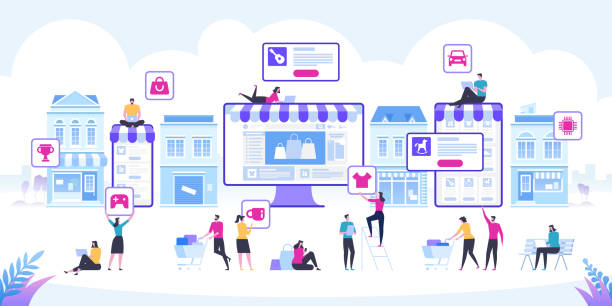
The world of personal website design is constantly evolving, and with the advent of new technologies and changing user expectations, its future trends are also taking shape.
Awareness of these trends can help you keep your individual website always up-to-date and competitive.
One of the main trends is an increasing focus on personalized user experience (Personalized UX).
Using AI and machine learning, websites will be able to adjust content and layout based on each visitor’s behavior and preferences.
This makes users feel that the website has been designed specifically for them.
Another trend is voice-based design (Voice UI) and voice search.
With the proliferation of voice assistants like Siri and Google Assistant, websites need to be optimized to respond to voice queries.
This involves using natural language in content and structured data.
Animations and micro-interactions will also play a more prominent role.
These small, dynamic elements, such as button reactions upon clicking, help create a more engaging and enjoyable user experience.
Minimalist designs and dark mode will also remain popular, as they aid readability and reduce eye strain.
Given the increasing importance of sustainability and the environment, green website design is also growing, focusing on optimizing server energy consumption and reducing the carbon footprint of websites.
Ultimately, personal website design is moving towards simplicity, speed, and intelligence to best tell your personal and professional story in the online world.
Frequently Asked Questions
| Question | Answer |
|---|---|
| Why should we have a personal website? | A personal website helps you build your personal brand, showcase your skills and portfolio, connect with your audience, and gain new career opportunities. |
| What steps should be taken to design a personal website? | The steps include goal setting, domain name and hosting selection, platform choice (e.g., WordPress), user interface design, content creation, search engine optimization (SEO), and launch. |
| Do I necessarily need to know coding to design a personal website? | No, by using Content Management Systems (CMS) like WordPress or Website Builders like Wix and Squarespace, you can design your website without needing to code. |
| What is a Domain Name and how do I choose one? | A domain name is your website’s address on the internet (e.g., yourname.com). It’s best to choose a short, memorable name relevant to you or your business, with a suitable extension (like .com, .ir). |
| What is Hosting and why do I need it? | Hosting is a space on the internet where all your website’s files and information (like images, texts, codes) are stored to be always accessible to users. Without hosting, your website will not be visible. |
| What should the content of a personal website include? | Content usually includes an About Me page, portfolio, services/skills, blog (articles), contact information, and a contact form. |
| How can I optimize my personal website for search engines (SEO)? | By using relevant keywords, producing high-quality content, improving website loading speed, being mobile-responsive, building internal and external links, and optimizing title tags and descriptions. |
| Why is Responsive Design important for a personal website? | Responsive design ensures that your website displays correctly on all devices (computer, tablet, mobile) and provides a good user experience, which is also important for SEO. |
| What should I do for personal website security? | Use an SSL certificate (HTTPS), regularly update the platform and plugins, use strong passwords, perform regular backups, and install a firewall or security plugins. |
| How can I increase my personal website’s traffic (visitors)? | Through SEO optimization, content marketing (blogging), social media activity, email marketing, online advertising, and collaboration with other websites. |
And other advertising services of Rasaweb Advertising Agency
Smart Advertising Campaign: Professional optimization for customer acquisition using key page optimization.
Smart Link Building: An effective tool for campaign management with the help of SEO-driven content strategy.
Smart Marketplace: A professional solution for improving SEO ranking with a focus on user experience customization.
Smart Direct Marketing: Transform campaign management with the help of attractive UI design.
Smart Content Strategy: Transform SEO ranking improvement with the help of intelligent data analysis.
And over hundreds of other services in the field of internet advertising, advertising consultation, and organizational solutions.
Internet Advertising | Advertising Strategy | Advertorials
References
Webramz: Personal Website Design
Arian Host: Personal Website Design Cost
Mizbanfa: How to Create a Personal Website
Faraz Group: Importance of Having a Personal Website
❓ Transform your business in the digital world with Rasaweb Afarin Digital Marketing Agency. We pave your path to growth and success by providing comprehensive services including SEO, content marketing, and multilingual website design. For a free consultation and to learn more about our solutions, contact us today and shape the bright future of your business.
📍 Tehran, Mirdamad Street, Next to Central Bank, Southern Kazeroun Alley, Ramin Alley No. 6

